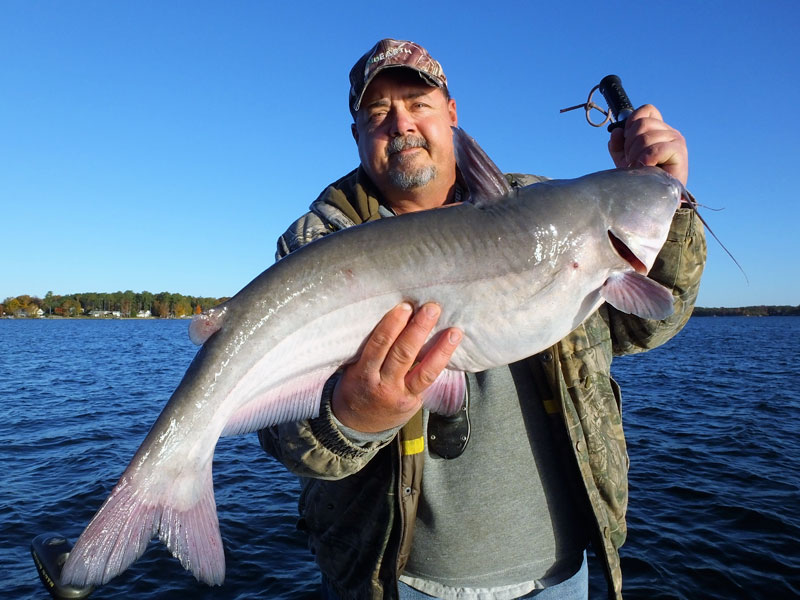
South Carolina’s Lake Murray is a productive catfish destination year-round, but the dead of winter is prime time to target the biggest blue and channel catfish.
Guide William Attaway from nearby Pomeria, S.C., said it’s a catfishing bonanza.
“I like Lake Murray during winter for several reasons,” Attaway said. “First, it’s full of fat cats, with big blues and channel catfish the prime targets. Murray also has a good population of flatheads, and we’ll catch some big flatties during the winter. Another plus is the great forage base composed of shad and herring. Plus, the lake is chock-full of white perch, another favored forage for big catfish.
Attaway also enjoys the “elbow-room” when fishing during the coldest months.
“Most everyone on the lake in February is fishing, a lot different than the rest of the year,” he said.
Attaway said another winter plus is that it’s an excellent opportunity to hook a trophy catfish, with big blues and channels getting fat on huge pods of shad and herring.
“The average channel cat we catch ranges from 6 to 12 pounds, with plenty of double-digit sized channel cats caught,” he said. “Lake Murray ranks high in the state for quality channel catfish action. Blue catfish typically range from 10 to 20 pounds, but much-larger fish are in play on any given day, with fish in the 30- to 40-pound class realistic, and the top-end blues grow well beyond that.”
Upstream ups your catch
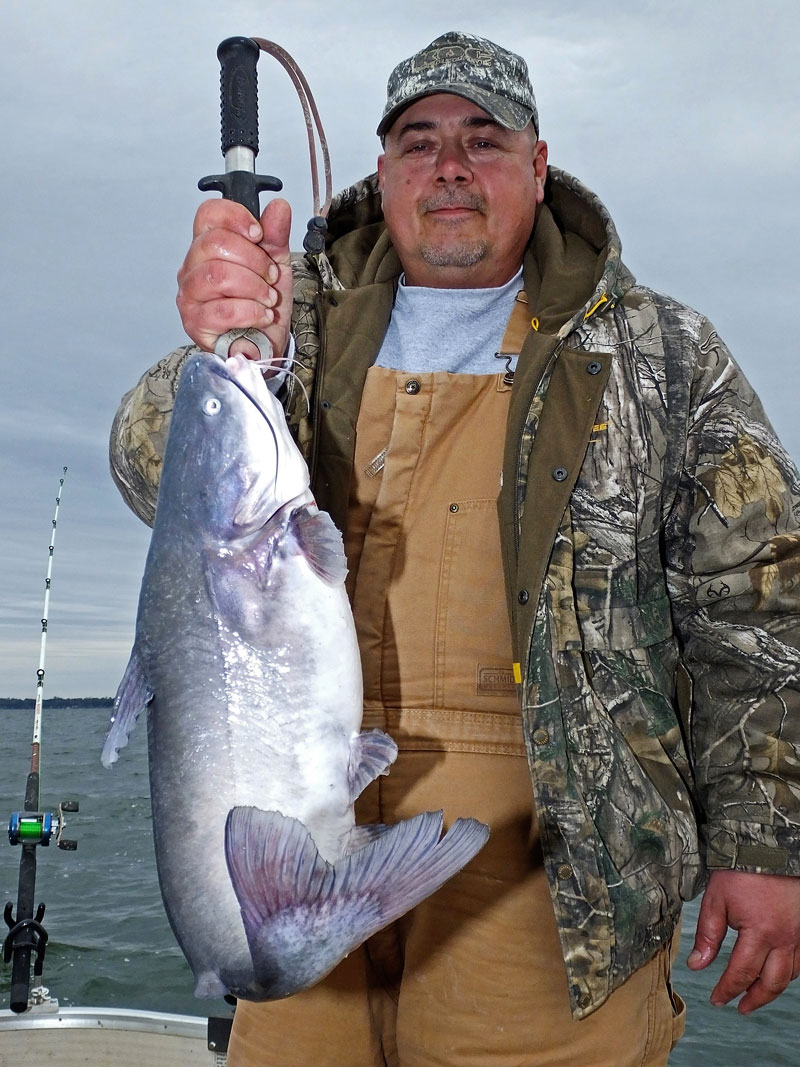 The entire lake can be productive, but Attaway prefers the area from Dreher Island and upstream. The upper end of the 50,000-acre lake has a variety of targets at fishable depths, including deep channels, points, humps, ledges and deeper flats.
The entire lake can be productive, but Attaway prefers the area from Dreher Island and upstream. The upper end of the 50,000-acre lake has a variety of targets at fishable depths, including deep channels, points, humps, ledges and deeper flats.
“If the upper lake gets muddy from heavy rains, I’ll certainly move downlake,” he said. “But the upper part of Lake Murray offers plenty of options to locate biting fish.”
Attaway said the first step is to check an area with your depth finder, searching for a combination of forage and catfish in an area before fishing. He looks for big-fish marks he believes are catfish mixed with the schools of forage.
“During February, I often find catfish relating to the old river channel, and another good option is the deeper stretches of larger creeks,” he said. “A third option are the flats or points in slightly shallower water. But for cold weather, I’ve found the deep river channel and adjacent ledges are the most consistent options.”
Attaway said productive depths are in the 50- to 70-foot range, but that can change to shallower with dingy and/or warming water.
Just drifting along
Winter is drift-fishing time for Attaway, who employs the basic Santee rig — a Carolina rig with a small float attached to the leader between the swivel and hook — to effectively cover a lot of territory.
“The forage and catfish are typically found in a general area more than just a single spot,” he said. “A large but deep high spot along the river channel, an outside bend in the channel and along the base of the ledge are target variations I find productive”.
Attaway will give an area at least 30 to 40 minutes to produce if he’s seeing forage and fish as he drifts. This time of the year, he’ll typically drift at 0.4 to 0.7 mph. If the water temperature gets really low, he’ll use sea anchors to slow his drift even more.
His favored baits are chunks of gizzard shad, white perch and herring, and the size may vary on each trip.
“I’ll use an assortment of sizes when I start that range from perch or gizzard shad heads down to small chunks of cut bait,” he said. “I let the catfish tell me what they want on any given day. On really cold days, I’ve found that small, 1-inch by 1-inch baits can work great, even on big fish. Downsizing the bait can be a great option during very cold weather.”
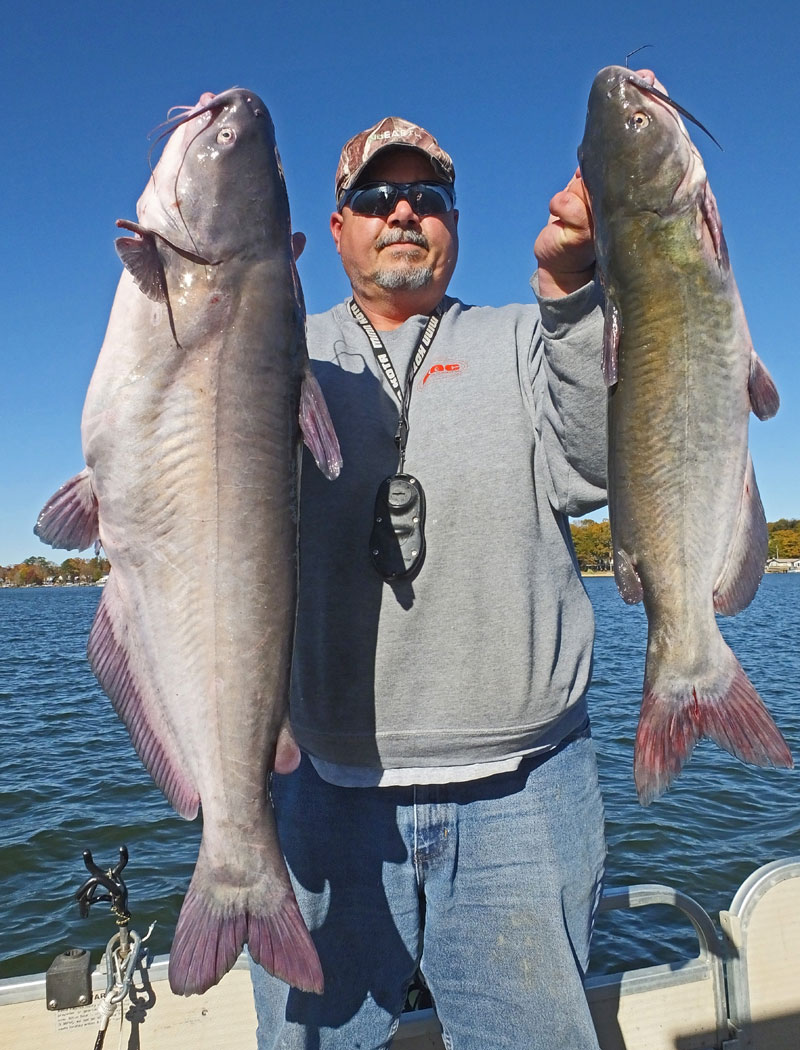 Attaway drifts six to 10 baits, depending on wind and current. When wind-drifting, he’ll often fish six or eight baits, but if using his trolling motor on calm days he may pull as many as 10.
Attaway drifts six to 10 baits, depending on wind and current. When wind-drifting, he’ll often fish six or eight baits, but if using his trolling motor on calm days he may pull as many as 10.
Planer board extends range
“Using a trolling motor on calm days allows me to set a couple of planer boards,” he said. “This gets baits well away from the boat, and the rest of the rigs are pulled behind the boat. The planer boards increase the spread of my baits, so we’re fishing a larger section of water. Getting the baits further from the boat with the planer board rigs also seems to hook up more large fish.”
Attaway said the typical bite in February is one of steady but not fast-paced, action. Occasionally he’ll hit a hotspot and hook multiple fish.
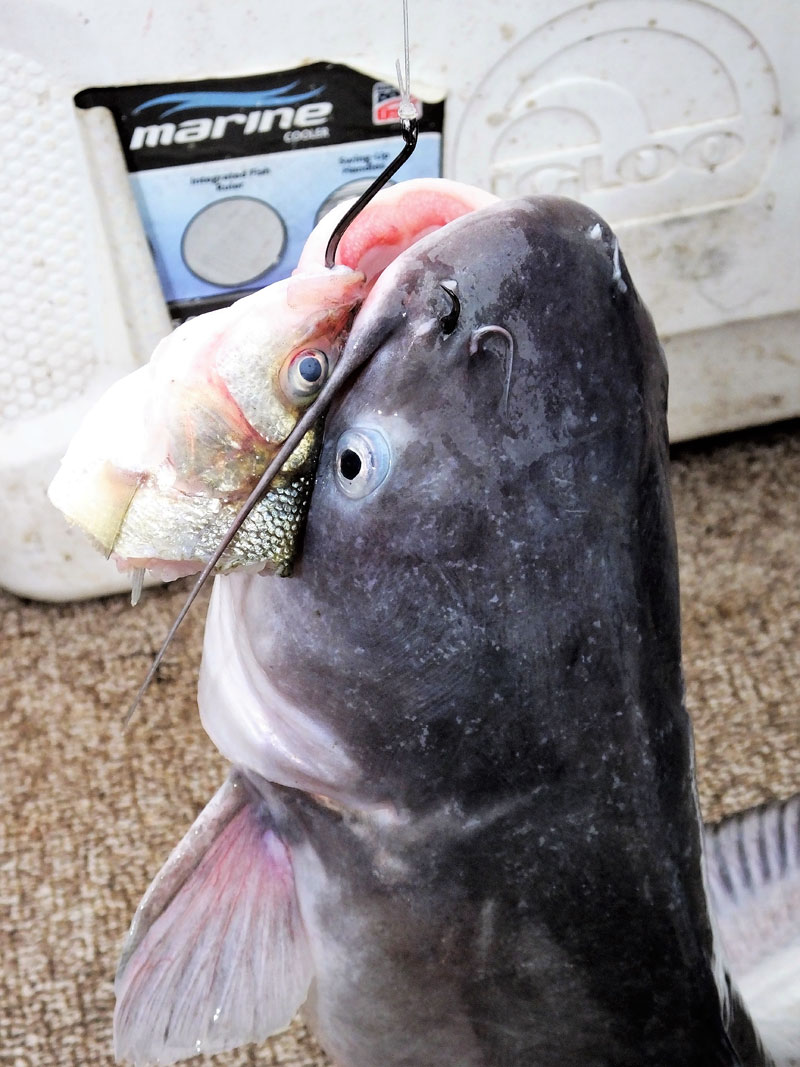
“As long as I see forage and what I believe are catfish marks on the graph, I roll with that,” he said. “When the bite stops, we’ll pull the rigs and re-drift the same general area until action slows.”
Attaway continues to refine the drift on each subsequent pass to better target the speed and depth and type and size of bait the fish prefer that day.
If the pattern slows and the bait or fish move, he’ll adjust to stay on them. With the low water temperatures common in February, once he’s on a solid pattern, it often holds for much of the day without any dramatic adjustments.
Attaway uses 7-foot, heavy action baitcasting rods with reels loaded with 40-pound main line and 50-pound monofilament leaders. The leaders are 18 to 30 inches long and have an 8/0 circle hook at the terminal end.
“I use small rattles in the float on the Santee rig, and I think on most days it helps,” he said.
Murray’s winter baitfish concerns
Guide William Attaway said he’s learned that, on Lake Murray, not all pods of forage are created equal during the winter.
“I do want to see plenty of forage, as well as big fish marks, near the bottom in an area before fishing,” he said, “but I’ve learned that just because I mark a massive concentration of forage covering the lake bottom, that doesn’t automatically mean I’m going to catch lots of fish.”
Attaway said the fish he catches in this situation are often stuffed full of forage and have fat, tight bellies. The easy opportunity to eat can make these catfish more difficult to catch.
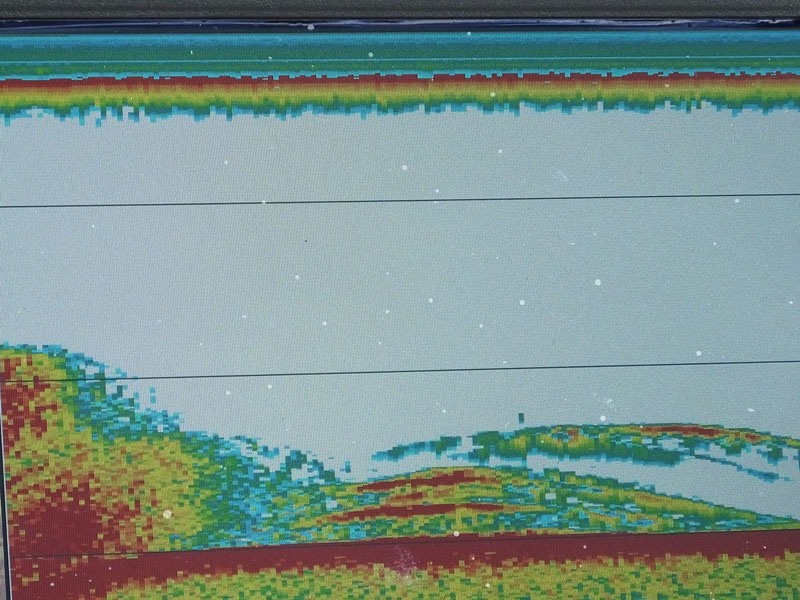
“The kicker is, sometimes the action will be good drifting right through these huge concentrations of forage,” he said. “But before fishing this mass of bait scenario, I’ll continue to scan the lake bottom nearby hunting for scattered schools of forage.”
“Typically, I’ll find scattered pods of forage nearby, and if I see big-fish marks littered among scattered pods of forage, that’s my prime winter target.”
Attaway said another winter forage consideration can occur when fishing early mornings.
“I generally like to let the sun get up before fishing during the winter,” he said, “not because of the cold, but because of the impact on forage. When I’m out early, before dawn, on really cold days, I’ll scan areas where I’ve been catching fish, and the forage may be suspended well off the bottom over deep water.
“I’ve found that’s a difficult pattern for catching catfish. But once the sun hits the water, the forage and catfish return to near the bottom, and fishing is much more productive. Getting out real early doesn’t present the advantage as it may during other times of the year.”
DESTINATION INFORMATION
HOW TO GET THERE — Lake Murray is easy to access from either I-20 or I-26. Major towns around the lake include Lexington, Chapin, Gilbert, Prosperity and Irmo. Numerous launching ramps are found in any section of the lake you wish to fish. Visit www2.dnr.sc.gov/ManagedLands/BoatRamp/BoatRampSelected/1224900
WHEN TO GO — February is an excellent time for both quality and quantity of a variety of catfish species. The majority will be blue and channel catfish, but also fat, winter flatheads. Channel catfish in double-digit sizes are likely, and blues in the 15- to 40-pound class are reasonable expectations.
BEST TECHNIQUES — Drift deep water using the Santee rigs with cut bait. Cut shad, herring and white perch are three top offerings used by expert catfish anglers.
FISHING INFO/GUIDES — William Attaway, Slick Willie’s Guide Service, 803-924-0857 or www.slickwilliesguideservice.com. See also Guides & Charters in Classifieds.
ACCOMMODATIONS — Lake Murray Country, 803-781-5940, www.lakemurraycountry.com; S.C. Department of Parks, Tourism and Recreation, 866-244-9339; S.C. Carolina Association of Visitor Bureaus, www.discoversouthcarolina.com.
MAPS — Navionics Electronic Charts, www.navionics.com; Delorme’s South Carolina Atlas & Gazetteer, 800-561-5105, www.delorme.com; Kingfisher Map 800-326-0257, www.kfmaps.com.





Be the first to comment